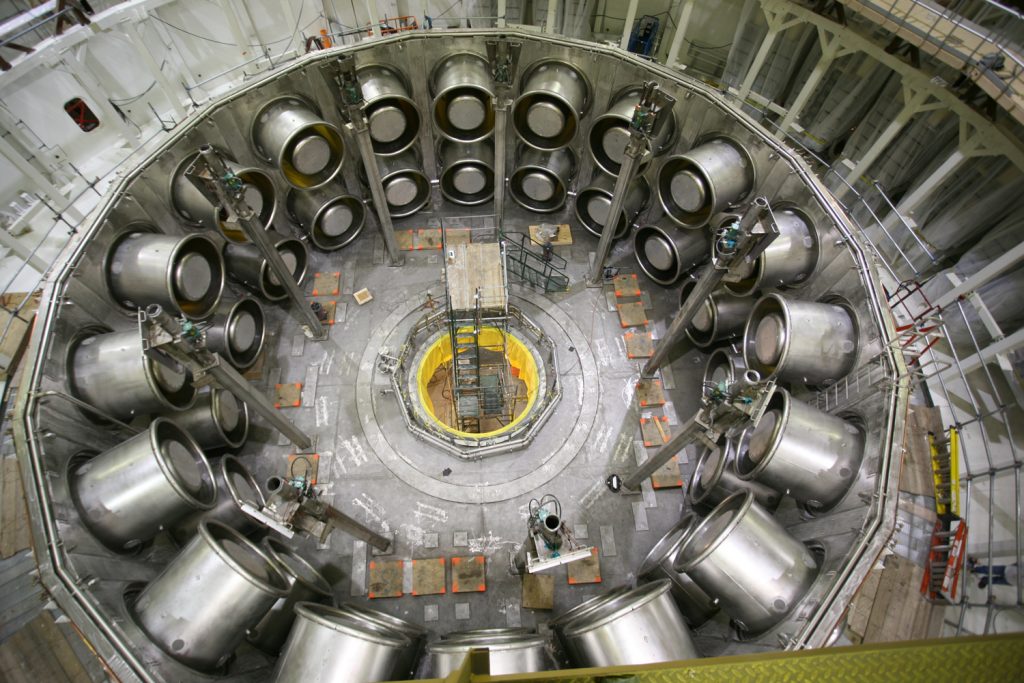
ALBUQUERQUE, N.M —Sandia National Laboratories’ Z machine, the world’s largest producer of X-rays, shook the ground for several hundred yards in every direction for the first time since July 2006, when the 22-year-old facility was gutted to undergo a complete refurbishment at a total project cost of $90 million.
Z has been overbooked in recent years with requests for experiment time from national labs, universities, and the international community. The facility is in demand because of Z’s capability to subject materials to immense pressures, compress spherical capsules to produce thermonuclear fusion reactions, fire objects much faster than a rifle bullet, and produce data for models of nuclear weapons effects — as well as, more arcanely, the conditions surrounding black holes in space. Given its complex mission, it was time for a more modern Z.
The improved version is capable of firing more often, at higher energies, and with improved precision.
Sandia is a National Nuclear Security Administration laboratory.
The new facility — optimized for both z-pinch and material properties work — will increase the strength of its electrical pulse from 18 million amps to an anticipated 26 million amps. The facility also now offers improved control over the shape of its electrical pulse for better reproducibility as it enters new experimental regimes.
A z-pinch is so named because the large current passing in the vertical direction — the Z direction in cylindrical geometry — creates a magnetic field that pinches together the ions of thin wires that serve as electrical conductors until the current vaporizes them.
The 17.5-million-amp shot that signified the reopening of the facility was used to test new system components. It concluded an extensive facility outage during which the old pulsed power systems were removed, and the tank structure that contains the accelerator was extensively modified. New, more robust pulsed power components and subsystems were installed. Utility infrastructure modifications were made, and the accelerator subsystems were commissioned. Over the next several months, Z will conduct more tests to verify, validate, and optimize the performance and predictive models for the accelerator and determine reliable operating points for science program operation, the ultimate purpose for Z.
Z’s roots go back to 1985 when it was constructed as the Particle Beam Fusion Accelerator II (PBFA II), designed for light-ion fusion research. Lithium ions were shot at a target. Z-pinch technology breakthroughs used simple electricity and the z-pinch effect. Improvements led to modifying the center portion of the machine in 1996 to utilize this approach to successfully produce high energy density environments.
Renamed “Z,” the accelerator became a workhorse for the nation’s scientific community but faced operational efficiency limits due to the age of the hardware and a pulsed power drive system that was not specifically designed for z-pinch applications.
Dubbed the Z Refurbishment Project (ZR), the huge effort to modify the accelerator began with extensive design and development activity in 2002. For the first time, the detailed component design depended heavily on three-dimensional simulations of their performance.
Improvements included new capacitors that doubled the energy storage capability within the same physical volume, and stainless steel, electrically optimized pulsed power components for durability.
Sadly for graphic artists (but not for engineers), Z will no longer provide those dramatic “arcs and sparks” photographs that have been the signature image of visual recognition for the old facility. The water-air interface that provided these visuals is now covered in decking that will eventually be filled up with diagnostic and recording equipment.
And that is proper, says Ed Weinbrecht, the effort’s project manager: “The ultimate deliverable from the facility is high quality data in support of scientific advances in high energy density-based physics.”


